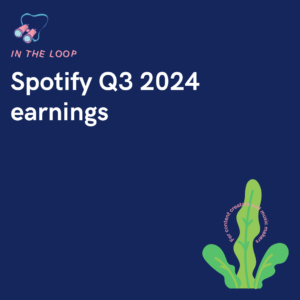With the Fediverse being a concept that isn’t a household name, it can be argued it isn’t really necessary. Or, that it hasn’t served any purpose. But, there are many platforms you’ll likely have heard of that run off this system.

1. Mastodon
Mastodon is perhaps the most well-known success story in the Fediverse. Launched in 2016, Mastodon is a decentralised social network that functions similarly to Twitter. However, it is based on open-source software and the ActivityPub protocol.
Instead of being controlled by a single company, Mastodon consists of many independent servers (called instances). These are run by different communities, each with its own rules and moderation policies.
Success highlights:
- User growth: Mastodon has seen significant growth, particularly during times of turmoil on centralised platforms like Twitter. For instance, when Elon Musk acquired Twitter, Mastodon experienced a surge in users looking for a more stable and user-controlled alternative.
- Community diversity: Mastodon’s decentralised nature allows for a diverse range of communities. Each with its own focus, whether it’s art, technology, social justice, or specific hobbies. This has led to a rich and varied user experience.
- Sustainability: Many instances are crowdfunded or supported by donations. Making the platform financially sustainable without relying on ads or selling user data.
2. Pixelfed
Pixelfed is a photo-sharing platform in the Fediverse that functions similarly to Instagram. It offers users the ability to share images, follow other users, and interact with content. All without the privacy concerns associated with centralised social media platforms.
Success highlights:
- User control: Pixelfed gives users control over their data and content, which is stored on decentralised servers. This appeals to users concerned about privacy and data ownership.
- Interoperability: As part of the Fediverse, Pixelfed allows users to interact with people on other platforms within the ecosystem, such as Mastodon, providing a broader reach than traditional, siloed networks.
3. PeerTube
PeerTube is a decentralised video hosting platform that provides an alternative to YouTube. It uses the ActivityPub protocol and peer-to-peer technology to distribute videos across a network of independent instances.
Success highlights:
- Decentralisation: PeerTube’s decentralised structure means no single entity controls all the content. This reduces the risk of censorship and ensures that content creators have more control over their work.
- Community support: PeerTube is supported by a strong community of developers and users who contribute to its growth and sustainability. This community-driven approach has helped the platform evolve rapidly and meet the needs of its users.
4. Friendica
Friendica is another social networking platform within the Fediverse. It is designed to integrate with other platforms like Facebook, Twitter, and Diaspora, in addition to other Fediverse services.
Success highlights:
- Integration: Friendica’s ability to integrate with multiple platforms allows users to maintain connections across different social networks. Bridging the gap between decentralised and centralised platforms.
- Adaptability: Friendica’s open-source nature allows users to tailor the platform to their needs, making it a flexible option for different types of communities.
5. Diaspora
Diaspora is one of the earliest social networks in the Fediverse, launched in 2010. It is based on the principle of decentralisation. Allowing users to host their own “pods” (servers) and connect with others across the network.
Success highlights:
- Privacy focus: Diaspora emphasises user privacy and data ownership. Making it a popular choice for those disillusioned with the privacy practices of larger social networks.
- Resilience: Despite being one of the older Fediverse platforms, Diaspora has maintained a dedicated user base and continues to operate effectively. Demonstrating the long-term viability of decentralised networks.
Conclusion
These success stories highlight the growing appeal of the Fediverse as a decentralised alternative to traditional social media platforms. Each of these platforms leverages the principles of decentralisation, user control, and privacy, offering users a different way to engage online. As concerns about data privacy and centralised control continue to rise, the Fediverse is likely to see continued growth and success in the coming years.






